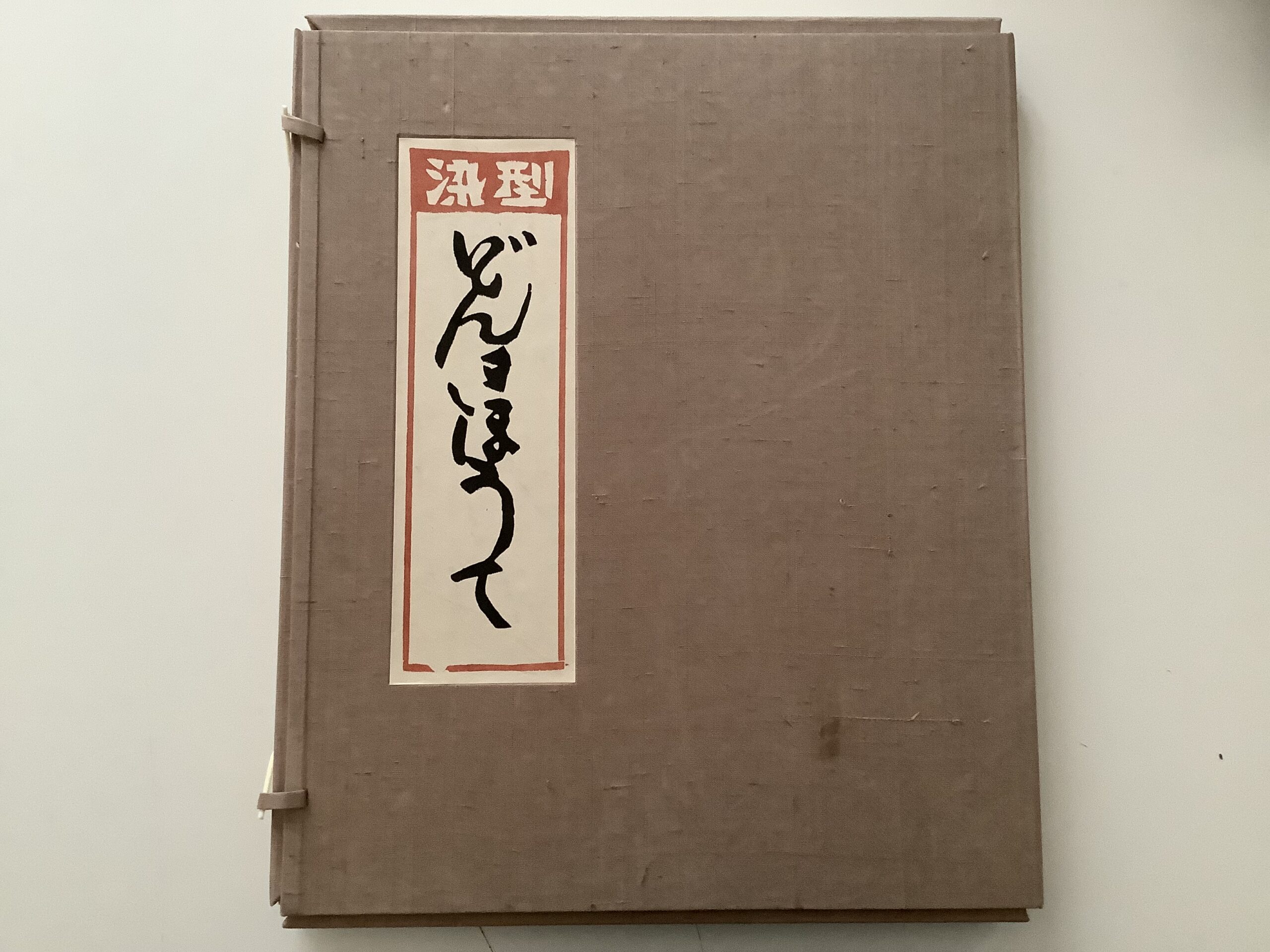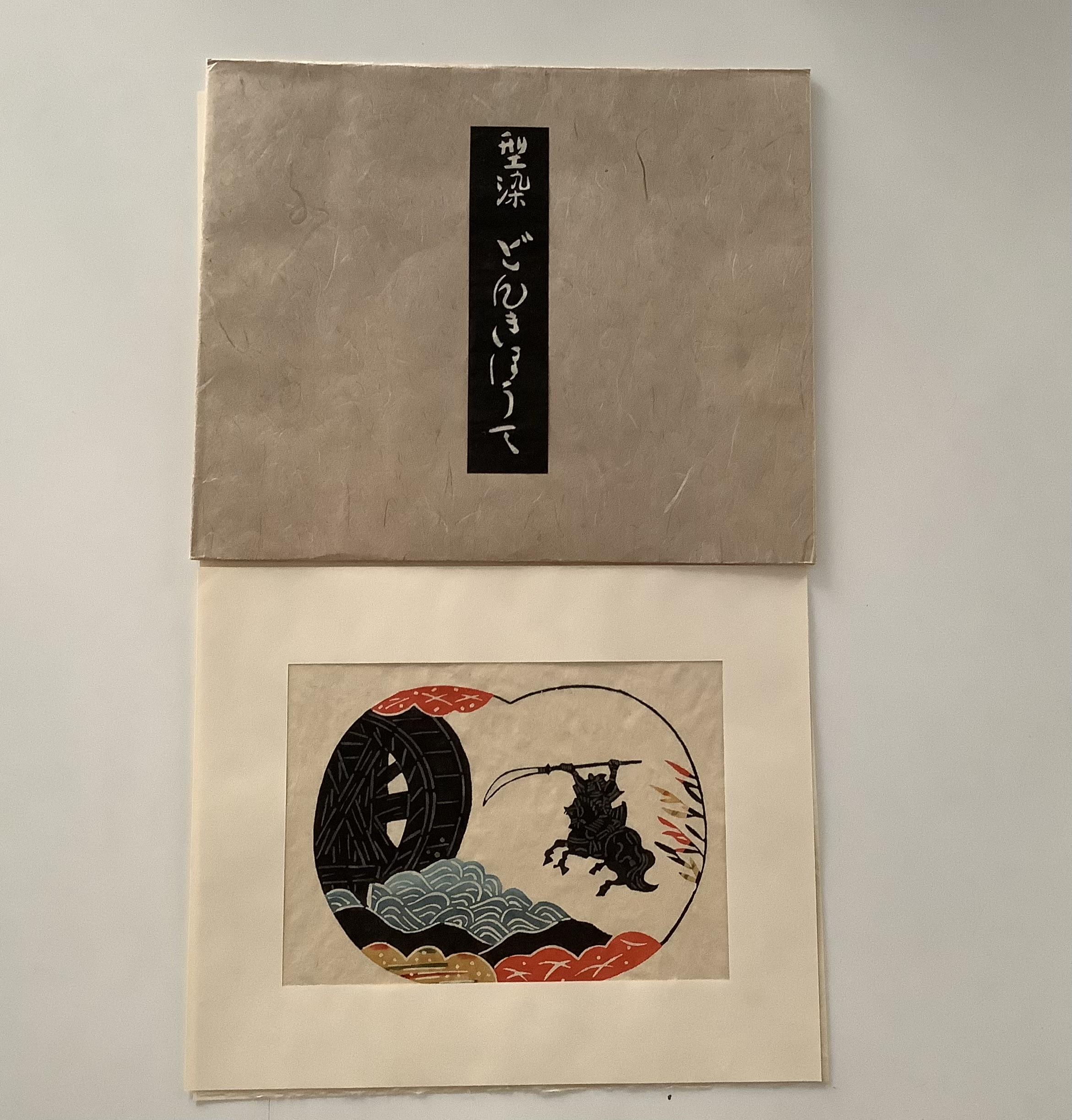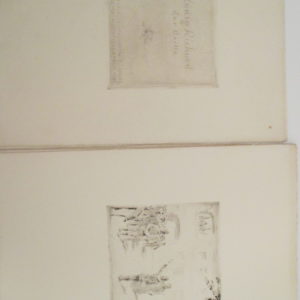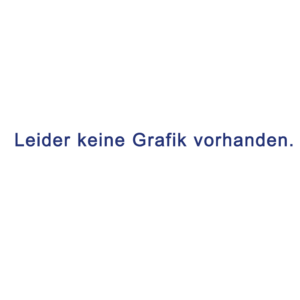Cervantes – Quijote – Serizawa – Serizawa, Keisuke. – Katasome Don Quijote. (Katazome a special Japanes techniuqe of dyeing)
6.495,00 €
Very rare and important portfolio with coloured woodcuts by Keisuke Serizawa, only in a small edition on special paper and housed in special Japanese paper-covers. Katazome is a Japanese method of dyeing fabrics using a resist paste applied through a stencil, typically a rice flour mixture applied with a brush or a tool such as a palette knife. Unlike yuzen, stencils are used repeatedly to make a repeating pattern. Pigment is added by hand-painting, immersion dyeing, or both. The area of the fabric covered and permeated by the paste mixture resists the later application of dye, thus creating undyed areas within the fabric. -Katazome was first invented as an inexpensive and faster alternative to highly-patterned woven brocade fabrics. Over time, katazome evolved into a respected fibre art form of its own. Keisuke Serizawa ( May 13, 1895 – April 5, 1984) was a Japanese textile designer. In 1956, he was designated as a Living National Treasure by the Japanese government for his katazome stencil dyeing technique. A leading member of the mingei movement founded by Yanagi Soetsu, Serizawa visited Okinawa several times and learned the Ryukyu bingata techniques of dyeing. Chosuke Serizawa (Archaeologist) was his son. – His folk-art productions included kimono, paper prints, wall scrolls, folding screens, curtains, fans, and calendars. He also produced illustrated books, including Don Quixote, Vincent van Gogh and A Day at Mashiko. In 1981, the Municipal Serizawa Keisuke Art Museum was opened in the city of Shizuoka. Another museum, the Serizawa Keisuke Art and Craft Museum was opened in 1989 in Sendai. Other museums that hold his work include the Brooklyn Museum, the Metropolitan Museum of Art, the Harvard Art Museums, the Seattle Art Museum, the British Museum, the University of Michigan Museum of Art, and the Museum of New Zealand. “The distinguishing trait of Serizawa’s katazome method is the use of the starch mixture to create, not a colored area as is current in direct-dyeing process, but a blank, undyed one that forms a part of the pattern and that can later be colored by hand in multi-color or monochrome as the designer sees fit. Special publicaton for the anniversary of “Mingei Techo(note)” by Tokyo Mingei Association, only in a small edition and only for the members of the association, not for the public. The concept of mingei , variously translated into English as “folk craft”, “folk art” or “popular art”, was developed from the mid-1920s in Japan by a philosopher and aesthete, Yanagi Soetsu (1889–1961), together with a group of craftsmen, including the potters Hamada Shoji (1894–1978) and Kawai Kanjiro (1890–1966). As such, it was a conscious attempt to distinguish ordinary crafts and functional utensils (pottery, lacquerware, textiles, and so on) from “higher” forms of art – at the time much admired by people during a period when Japan was going through rapid westernisation, industrialisation, and urban growth. In some ways, therefore, mingei may be seen as a reaction to Japan’s rapid modernisation processes.
1 in stock








